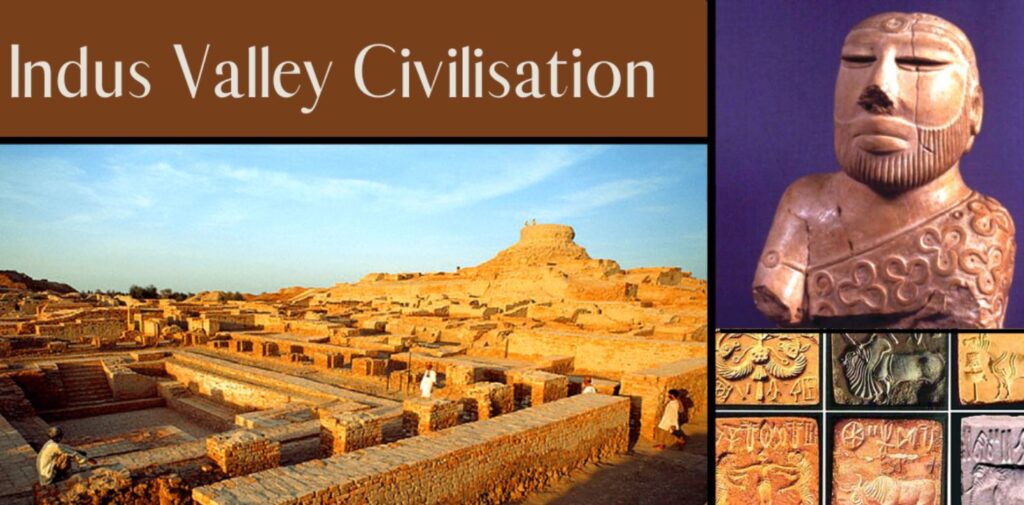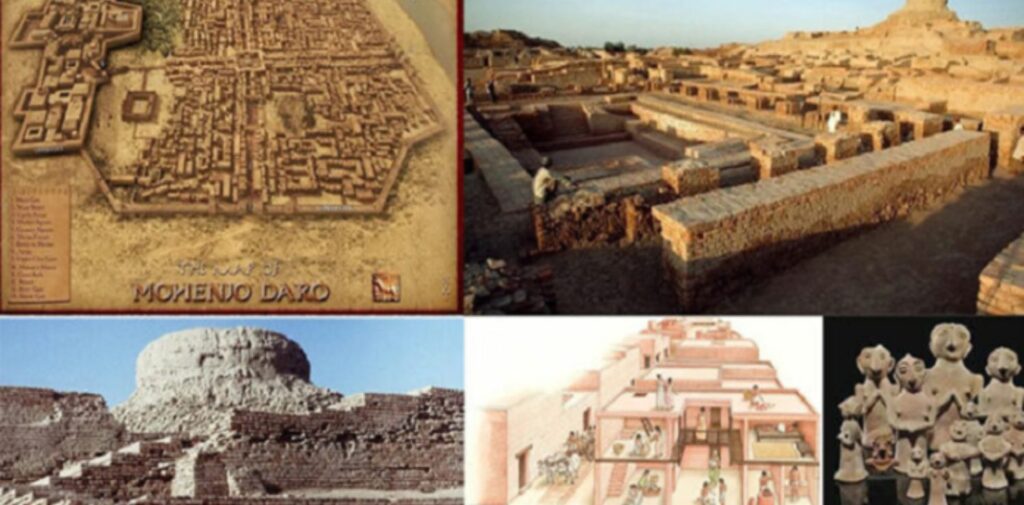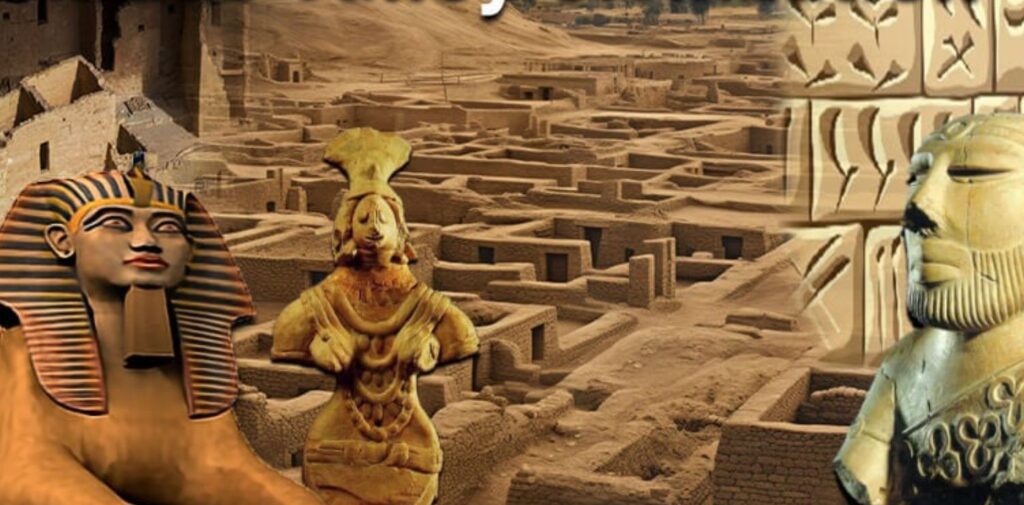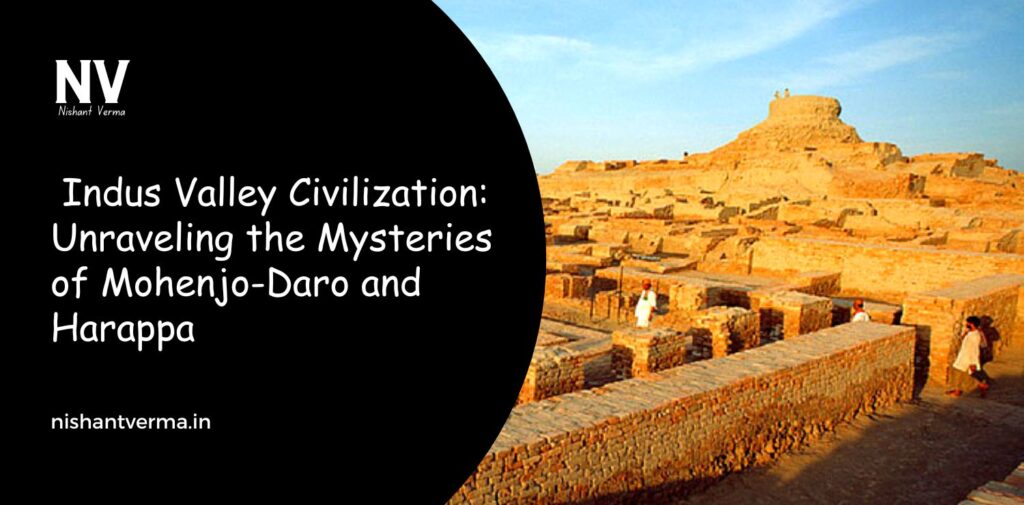The Indus Valley Civilization is one of the oldest and most fascinating civilizations in the world. It existed thousands of years ago, long before the times of the great kings and queens we often read about in history books. The civilization flourished in what is now modern-day India, Pakistan, and parts of Afghanistan. Among the major cities of this civilization, Mohenjo-Daro and Harappa stand out as two of the most important and well-known. But even today, many questions about the Indus Valley Civilization remain a mystery. In this article, we will explore the Indus Valley Civilization in a simple and easy way so that everyone, even young readers, can understand it.
What Was the Indus Valley Civilization?
The Indus Valley Civilization, also called the Harappan Civilization, was a highly advanced ancient culture that existed around 3300 BCE to 1300 BCE. It is one of the world’s earliest urban cultures, meaning it had well-planned cities, organized governments, and a developed economy. The civilization got its name from the Indus River, which flows through the region where it was located.

Where Was It Located?
The Indus Valley Civilization was spread across a large area in South Asia. It covered parts of modern-day India, Pakistan, and Afghanistan. The cities of Mohenjo-Daro and Harappa were located along the Indus River, and these cities are some of the most famous archaeological sites from this civilization.
The Cities of Mohenjo-Daro and Harappa
Mohenjo-Daro
Mohenjo-Daro is one of the most famous cities of the Indus Valley Civilization. Its name means “Mound of the Dead” in Sindhi, a language spoken in Pakistan. The city was built around 2600 BCE and was known for its impressive planning and advanced technology.
Mohenjo-Daro was carefully planned, with straight streets, large buildings, and an advanced drainage system. The people who lived in Mohenjo-Daro built houses made of bricks, which were arranged in a grid-like pattern. This shows that the city was well-organized. It also had a large public bath, called the Great Bath, which was possibly used for religious or cultural ceremonies.
The city also had an advanced drainage system, which was very unique for its time. The streets were lined with drains that carried away waste water. This shows that the people of Mohenjo-Daro cared about cleanliness and hygiene, even thousands of years ago.

Harappa
Harappa is another major city of the Indus Valley Civilization. It was located in present-day Pakistan and was one of the first cities to be discovered by archaeologists. Like Mohenjo-Daro, Harappa was built with great care and had a well-planned structure.
Harappa was known for its strong buildings made of baked bricks. The city also had wide streets and an organized drainage system. The people of Harappa used a system of weights and measures, which helped in trade and commerce. This shows that the Harappans had a developed system for business and economy.
Both Mohenjo-Daro and Harappa were examples of how advanced the Indus Valley Civilization was in terms of urban planning, technology, and trade.
Daily Life in the Indus Valley
The people of the Indus Valley lived in a way that was much more advanced than many other ancient cultures. They grew crops like wheat, barley, and rice, and raised animals such as cattle, sheep, and goats. Farming was very important to their economy, and they also used irrigation systems to water their crops.
The people of the Indus Valley were skilled craftsmen. They made beautiful pottery, jewelry, and tools from stone, metal, and clay. They were also skilled weavers and produced fine cotton fabric. In fact, the people of the Indus Valley are thought to be among the first to grow cotton and make clothes from it.
Trade played a big role in the life of the Indus Valley people. They traded goods with other civilizations, including Mesopotamia (modern-day Iraq). Items like beads, jewelry, and spices were exchanged for goods like metals and precious stones.
The people of the Indus Valley also used a form of writing, but unfortunately, we still do not know what it says. Many seals have been found with symbols on them, but no one has yet been able to fully decode the script. This is one of the biggest mysteries of the Indus Valley Civilization.
The Mysterious Decline
Despite being so advanced, the Indus Valley Civilization eventually started to decline around 1900 BCE. There are several theories about why this happened, but no one knows for sure. Some believe that the decline was caused by climate change. It is thought that the region may have experienced changes in rainfall, which affected the crops and water supply.
Others think that the decline could have been caused by invasions from outside groups or internal problems within the cities. Whatever the reason, by around 1300 BCE, many of the cities were abandoned, and the civilization faded away.

The Legacy of the Indus Valley Civilization
Even though the Indus Valley Civilization no longer exists, its legacy continues to influence the world today. The cities of Mohenjo-Daro and Harappa showed that people thousands of years ago were capable of incredible planning and organization. The advanced drainage systems, well-designed buildings, and thriving trade networks are a testament to the ingenuity of the people who lived there.
The Indus Valley Civilization was also one of the first places where cotton was used for making clothes, which has had a lasting impact on the textile industry. Many of the tools and techniques used by the people of the Indus Valley have influenced modern-day inventions and ideas.
What We Still Don’t Know
While archaeologists have learned a lot about the Indus Valley Civilization, there is still so much we don’t know. We don’t fully understand their writing system, and we still don’t know why the civilization declined. There are also many other cities and towns of the Indus Valley that have not yet been discovered. Who knows what secrets these places might hold?
Conclusion
The Indus Valley Civilization is an important part of world history. It was a highly advanced culture that existed thousands of years ago and left behind incredible cities, technologies, and a rich legacy. Even though there are still many mysteries about this ancient civilization, what we do know shows us just how advanced and intelligent the people of the Indus Valley were.
The cities of Mohenjo-Daro and Harappa remind us that long before the time of modern-day cities, there were people who were capable of incredible achievements. Their legacy lives on in the world today, inspiring us to continue learning from the past and exploring the mysteries of our history.




